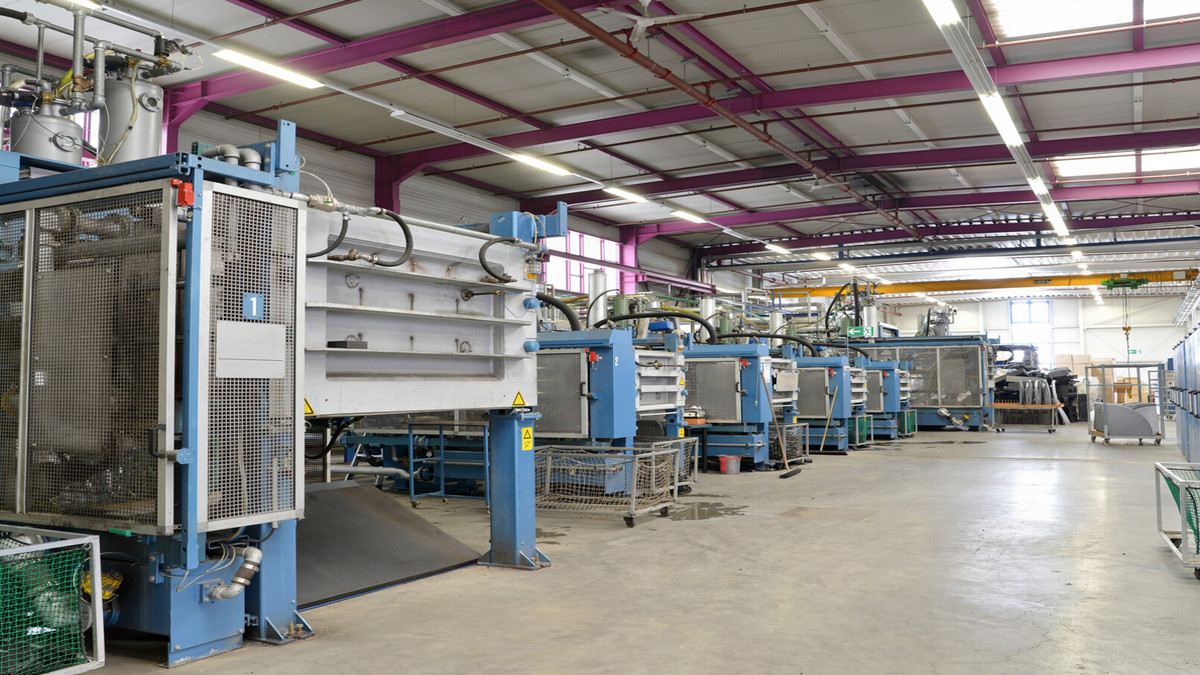The rubber vulcanizer is the most widely used instrument in the rubber processing industry to control the quality of rubber materials, rapid inspection, and basic research on rubber. and parameters such as maximum and minimum torque.
What does a Vulcanizer do?
A vulcanizer is a machine for vulcanizing various rubber and plastic products. It has the functions of timing mold clamping, automatic pressure supplementation, automatic temperature control, automatic timing, and alarm when it arrives. It is divided into three forms: electric heating, steam heating, and heat transfer oil heating.
The main function of the vulcanizer is to provide the pressure and temperature required for vulcanization. The pressure is generated by the hydraulic system through the hydraulic cylinder, and the temperature is provided by the heating medium (usually steam, heat transfer oil, etc.). Flat belt vulcanizers can be divided into column type flat belt vulcanizers and frame flat belt vulcanizers according to the frame structure. According to the number of working layers, it can be divided into single layers and multi-layer. The working medium of the hydraulic system can be divided into oil pressure and water pressure.
Working Principle of Vulcanizer:
Rubber belt vulcanization is a whole process from raw rubber to mature rubber. During this whole process, the rubber vulcanizer must provide working pressure, temperature, and time to control the vulcanized rubber. The vulcanizing machine satisfies this whole process, the sound card rack and the pressure plate produce the working pressure, and the electrical control cabinet and the heating plate produce the temperature and control the rubber vulcanization time. Domestic general rubber strip vulcanization temperature is 145 degrees, vulcanized rubber working pressure does not exceed 1.5mpa, and vulcanization time varies from 30 to 60 minutes depending on the tape.
The Performance of the Vulcanizer:
- PLC, HMI control, can complete manual and automatic control systems. The automatic control system can complete the functions of mold clamping, exhaust pipe, temperature control, vulcanized rubber timing, alarm, mold ejection, etc. The touch screen displays the temperature of each heating area of the information heating plate in real-time.
- The hydraulic cylinder is made of ZG270-500 raw materials, and the plunger pump is made of cold hard aluminum alloy pig iron with high material density, which is finely cast after casting. The sealing method of the hydraulic cylinder is a YX-type sealing ring.
- The automatic top iron of the hydraulic press is used for the pot side of the heating plate. Under the function of four hydraulic cylinders, the cushions on both sides of the heating plate will win or lose. Anti-block overlap equipment is set up on both sides of the heating plate.
- Each heating area of the heating plate is set up with a set of valves for adjusting the temperature. Under the control of the PLC, it is ensured that the temperature of each heating area of the heating plate is uniform and consistent.
- Hydraulic system: Applied to various hydraulic systems, under the control of PLC, it can complete fully automatic: mold clamping, exhaust, mold opening, and unloading.
- Synchronized and balanced organization of mechanical equipment: There is a synchronous shaft surrounding the generator set directly below the service platform, and racks are set up on both sides of the shaft to ensure that the service platform is leveled.
- Clamping-oriented equipment: Set up clamping-oriented equipment on both sides of the lower bed, and install oriented seats on the frame plate and service platform. The oriented seats produce and process slopes, and the slope spacing can be adjusted according to the top wire.
- Boosting organization for mold ejection: The four oil cylinders built under the service platform act during mold ejection, and the platform is forcibly pulled away to avoid the phenomenon of sticking to the pot and being unable to open the mold.
The Use and Application of Vulcanizer:
The vulcanizing machine is suitable for vulcanized rubber of various plastic products. It is necessary for plastics, vulcanized rubber guns and various thermosetting raw materials. The equipment is widely used and can be used in the metallurgical industry, Transport joints for adhesive belt conveyors in the chemical industry, power stations, etc.
Precautions for the Use of Vulcanizers:
The vulcanizer is mechanical equipment suitable for the vulcanization and pressing of various rubber and plastic products. It plays an important role in the rubber industry. The vulcanizer has complete functions and is relatively safe to operate. It reduces labor intensity and improves production efficiency.
When the vulcanizer is idle, it should be placed in a dry and ventilated environment. Not only that but also in a dry and ventilated environment when using the vulcanizer. Avoid placing it in a humid environment, because in a humid environment The environment will affect the normal operation of the vulcanizer, thereby affecting the quality of the produced products. In addition, before using the vulcanizer, you must read its instructions carefully, and operate step by step according to the requirements to ensure the standardization of the operation.







.png)






